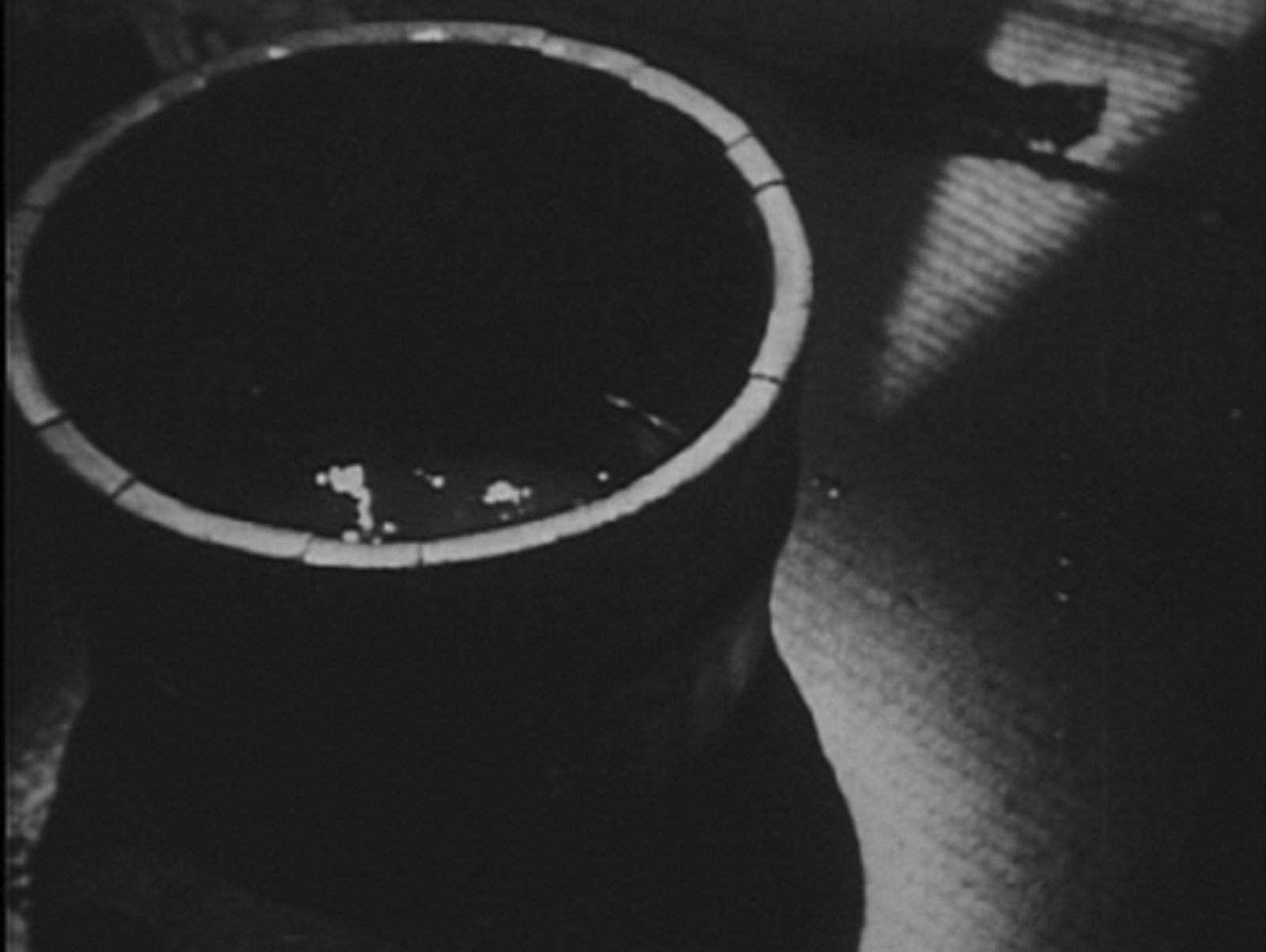
The story of HANAKAGO NO UTA (“Song of the Flower Basket”, 花籠の歌, 1937) revolves around a pork-cutlet diner along a cluttered back street of Ginza, Tokyo. Keizo (Reikichi Kawamura), the owner and the master of the diner, and his daughter Yoko (Kinuyo Tanaka) are running a small but successful business. The Chinese chef, Mr. Lee (Shin Tokudaiji), cooks the best pork-cutlet, as they say. Two of the most frequent customers are Ono (Shuji Sano) and Hotta (Chishu Ryu), a pair of rather lazy collage students. The story goes into a wicked spiral when Ono is arrested for a murder of a girl he once knew. Yoko becomes frustrated and nervous, while Hotta tries every possible means for his friend’s release.
I found the film depressing. I felt it more depressing than it needed to be. Gosho excels at creating chaos in a small world of otherwise charming ordinary people, and his earlier films, such as THE NEIGHBOR’S WIFE AND MINE (1931), THE BRIDE TALKS IN HER SLEEP (1933) or BURDEN OF LIFE (1935), are full of adorable silliness. In HANAKAGO NO UTA, however, these silliness gave away to somber sighs. The atmosphere is rather chilling, especially the diner, – claustrophobic, low-ceiling, poorly illuminated – the kind of a place you would find in a forgotten cul-de-suc of a forgotten street. The characters are also gradually plastic and discolored. Kinuyo Tanaka’s rosy cheek in black & white becomes just pale gray, while young Shuji Sano even loses his famous plastered smile. Though Hotta and Mr. Lee – great acting by Ryu and Tokudaiji – bright up the scenes a little, the overall somberness suffocates the story. Is it a sign of time, maybe?
Unusually heavy snow covered streets of Tokyo on February 26, 1936. Failed coup d’etat,- 226 Incident, as it has come to be known – has sputtered the mist of blood on this snow. Young officers, – intelligent, royal, and particularly vulnerable to the ideal of revolution – mobilized the troops to occupy several key locations and assassinated a few politicians. The troops and the officers were called “bandits” by the enraged Emperor Hirohito himself, and their revolution fell apart. Yoshishige Yoshida’s COUP D’ETAT (1973) is a fantastic version of the event, largely told from the perspectives of those involved in the coup. Ono and Hotta in this film were in the same age group as these rebel officers. History largely has forgotten about them, tens of thousands of Onos and Hottas, living in small rooms and apartments in shadows of Metropolis, only trying to get a decent job and survive. What did they see and how did they feel on that day?

There had been signs, – eerie rumors, vicious voices, hateful eyes, spine-chilling words – sneaking into small cracks of minds of people. Several days before the coup d’etat, a strange rumor – Osaka was destroyed by a huge earthquake – spread around in Tokyo. Next day, another rumor of an assassination. Numerous kinds of agitprop pamphlets of dubious origin were sold on streets. Ministry of Interior granted more power to Special Unit in Security Police after the coup, effectively kicking off the Orwellian state. Yes, that is what you call, ‘dark times’.

So, I find it all the more remarkable that HANAKAGO NO UTA mirrors the other side of the time, largely forgotten, having died with the fading memories of Onos and Hottas. The film never mentions the incident, not even a hint of social anxieties. But it’s all there. When Yoko sighs in the deserted diner, her nervous trembling would echo just a little in my head. Their anxiety was not a concrete fear, not yet. It was twisted melancholy, as if listening to rumbling ground far away.
The film opened in January 1937 and in July of the same year, the Marco Polo Bridge Incident erupted. It was no longer a ‘conflict’. It had become an official war.
Hanakago No Uta (花籠の歌, 1937)
Directed by Heinosuke Gosho
Written by Kougo Noda and ‘Goshotei’ (Heinosuke Gosho)
Based on the novel by Fumitaka Iwasaki
Cinematography by Masao Saito
Starring Shuji Sano, Kinuyo Tanaka, Reikichi Kawamura, Shin Tokudaiji, Chishu Ryu
Shochiku
Copyrighted materials, if any, on this web page are included as “fair use”. These are used for the purpose of research, review or critical analysis, and will be removed at the request of copyright owner(s).
